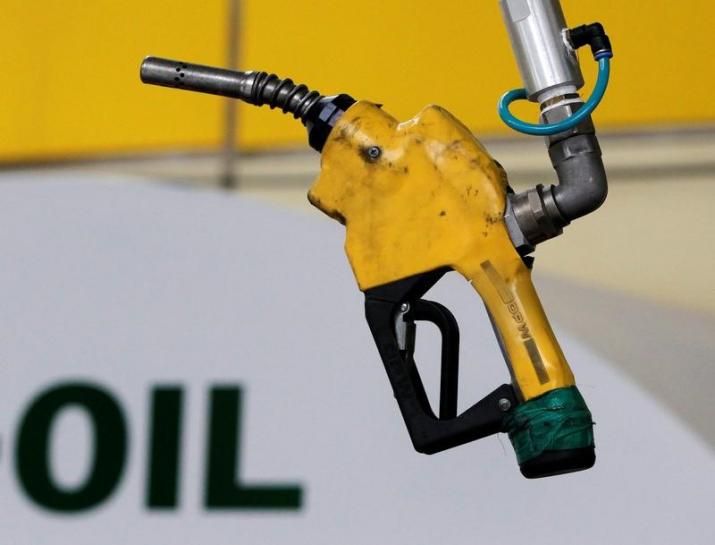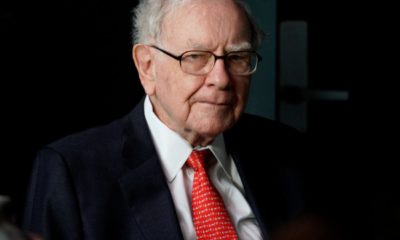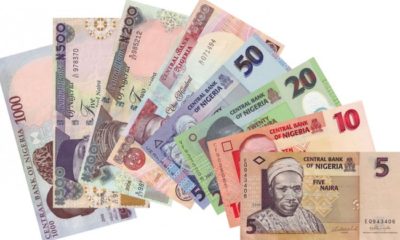US stock markets roared higher overnight as omicron nerves settled on initial indications that the new variant is very contagious, but less severe symptom-wise. Whether that is the case or not remains to be seen and omicron sentiment will continue driving swings in market direction into next week. It was enough to flush the FOMO gnomes of Wall Street into action though, with stock markets rallying impressively on Wall Street.
Believe it or not, there are other things going on in the world, however. Most immediately, the US releases Non-Farm Payrolls this evening and assuming the omicron news remains less end of the world, a print above 550,000 jobs should see the faster Fed-taper trade reassert itself. That may nip the equity rally in the bud, while the US Dollar and US yields could resume rising.
Asian markets are subdued today across asset classes and even US equity futures have edged lower this morning. There is a fair bit of negative news floating around this morning, and Asia as a whole, after a tumultuous week, looks ready to sit out today’s session on the sidelines. The US Non-Farm Payrolls is as good a reason to be cautious as any. Additionally, the US Congress has passed a bill to temporarily fund the US Government into mid-February, but no progress has yet been made on lifting the overall debt limit, which could be hit as early as next December 15th.
Staying with the US, the US SEC has announced a tightening of listing requirements surrounding ownership and the certifying of auditors in overseas territories who audit foreign companies listed on US exchanges. That is directly aimed at China of course, which have no intention of allowing any such thing. Markets are speculating today that the requirements will see an exodus of Chinese companies from the US exchanges. China ride-hailing giant, Didi Global, has announced it will delist from the US after a troubled IPO that also angered the Chinese Government, never a smart business move. It comes after the Grab SPAC IPO flopped yesterday, with a classic stagging of the IPO occurring. Buying the IPO and dumping into the initial rally. That saw Grab finish 20% lower on the first day of trading. Time will tell if Grab’s “patriotic” listing in the US will remotely justify its $40 billion valuation. I suspect not, and that the only winners will be the pre-IPO shareholders.
Nerves continue to swirl in the China property space as well today, with troubled developer Kaisa failing to gain the 95% approval to swap out its maturing $400 million, note due next week, for longer maturities. Default risks have now reached deafening levels for Kaisa who have until December 7th to pay. Additionally, a 30-day grace period on an $82.50 million coupon for Evergrande falls on 6th December next week.
China’s Caixin Services PMI for November fell unexpectedly to 52.1 this morning from 53.8 in October, raising fears that domestic consumption is fading on the Mainland on rising labour and energy costs, as well as selective virus restriction. That has overshadowed improved services PMI data from Japan, Australia, Singapore and Hong Kong. South Korean markets are struggling as well, with virus cases surging, capping gains on the Kospi and also the Won.
Add in the danger of being whip-sawed on random omicron headlines, it’s hardly surprising Asia wants to sit the rest of today out. I expect a similar response from Europe as well. Next week, we see a lot of CPI releases from the region, including China, as well as the Reserve Bank of Australia and Reserve Bank of India policy decisions, plus China trade data. The week after will see a central bank policy meeting frenzy, including the US FOMC, and depending on where the world is with omicron, a number of central banks will struggle to hit the W for Wimp button, regarding their inflation outlook. Volatility has been the winner this week, and I fully expect it to continue to do so through the rest of December.
Asian equities refuse to follow the US lead.
The perpetual mega-bulls of the US stock market had their day in the sun finally overnight as US indexes moved sharply higher as the armchair epidemiologists of day trading decided that omicron, while contagious, will be mild symptomatically. The S&P 500 jumped 1.42% higher, with the Nasdaq rising by 0.83%, while the Dow Jones leapt by 1.83%. In Asia, some short-term profit-taking is evident as the news wires turn slightly sour in Asia, futures on all three indexes edging around 0.15% lower.
With US equity futures markets unable to maintain upward momentum today, tier-1 US data due this evening, virus nerves and concerns reappearing around China property and China US-delisting worries, Asian markets have mostly rallied, but only modestly so. The Nikkei 225 has climbed by 0.35%, with the Kospi climbing by 0.45%. Mainland China sees the Shanghai Composite 0.55% higher, with the CSI 300 rising by 0.35%. Hong Kong is in the red, though, as China property nerves sap sentiment. The Hang Seng has fallen by 0.65%.
Across the region, Singapore is 0.25% higher, with Kuala Lumpur up 0.30%, while Jakarta has fallen by 0.30%. Manila has jumped by 1.05%, with Bangkok down 0.15% and Taipei unchanged for the session. Australian markets have recorded cautious gains, the All Ordinaries edging 0.10% higher and the ASX 200 gaining 0.20%.
European markets will likely unwind some of yesterday’s losses, but gains will be limited ahead of the US Non-Farm Payrolls. As ever this week, the street is one negative omicron headline away from turning sharply lower en masse. If the virus news ticker stays quiet, a higher US Non-Farm Payrolls print could see equity gains capped, with a slightly lower or on target print of 550K, not enough to entirely remove faster Fed-taper fears.
The US Dollar rallies.
With omicron nerves easing overnight the US Dollar reasserted itself, rallying modestly versus major currencies and holding steady in the EM space. The dollar index finished 0.10% higher at 96.12, edging higher to 96.17 in Asia. Notably, both the Australian and New Zealand Dollars, key risk-sentiment barometers fell once again to 2021 lows, hinting that caution remains the key mantra in currency markets still.
EUR/USD has slid back below 1.1300 to 1.1295 and an upbeat US Non-Farm Payrolls tonight will set up a test of 1.1200 again next week. In a similar vein, GBP/USD has moved back through 1.3300 to 1.3390, with a retest of 1.3200 possible. USD/JPY rose as Yen haven buying subsided overnight, climbing to 113.20 this morning. If indeed we are at “peak-omicron,” then this weeks low of 112.50 is likely to be the low for the pair for the foreseeable future.
The EM space was relatively sedate overnight, but the US Dollar has resumed advances once again versus Asia FX today with USD/KRW, USD/IDR and USD/MYR up around 0.20%. A firm Non-Farm Payrolls number tonight will increase the pressure of the Asian currencies, whose monetary policies, buy and large, are not aligned with a Federal Reserve set to increase the pace of its taper.
I expect currency markets to remain subdued into the US tier-1 data. As usual this week, the caveat is omicron. If another negative headline were to hit the wires today, we will likely see US Dollar selling with the Yen and Swiss Franc as the main beneficiaries.
OPEC+ surprises, with conditions.
Oil markets rallied last night despite OPEC+ surprising the markets and the author by deciding to continue their pre-planned 400,000 bpd production increases this month. OPEC+ has left a huge poison pill in their statement, retaining the right to convene an immediate meeting and to change their mind if omicron continues to send oil prices lower. That has made it dangerous to be short at these levels and the net effect was to lift prices higher, after the market sold immediately on the headline, before reading the small print.
Overnight, Brent crude finished 2.25% higher at %70.50 a barrel, while WTI rallied 2.25% to $67.35. In Asia, both contracts have continued to rally, rising 0.50% to $70.85 and $69.70 a barrel. Unless we get a major omicron escalation, I will stick my neck out and say that this week’s lows for Brent and WTI likely represent the lows for the medium-term. The relative strength indexes (RSIs) are still oversold meaning both contracts remain vulnerable to a further short-squeeze.
The overnight lows for Brent at $65.80 and for WTI at $62.50 a barrel form short and medium-term support, and it is unlikely the market will want to test OPEC+’s mettle at this stage. The grouping having shown itself to be relatively immune to pressure from the US President amongst others. That said, virus concerns continue to linger, meaning Brent crude will struggle to recapture $75.00 a barrel, and WTI $70.00 a barrel in the nearer term.
Gold’s standing 8-count continues.
With virus nerves subsiding and the Fed-taper stronger US Dollar story reasserting itself, gold continued to take a standing 8-count, remaining near its weekly lows. Gold fell 0.77% to $1768.25 an ounce overnight, before weekend risk hedging buyers in Asia lifted it back to $1772.50 this morning.
Gold is flirting with its last major support level at $1770.00 an ounce, and failure tonight sets up a possible wave of stop-loss sellers and a retest of $1720.00, possibly as early as next week. Gold’s inability to rally with skyrocketing risk aversion, a weaker US Dollar or weaker US yields remains deeply concerning.
Gold has resistance between $1791.00 and $1792.00 an ounce, where the 50, 100 and 200-day moving averages are clustered. Behind that is $1800.00 and then $1815.00 an ounce.


































